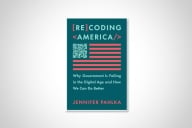You have /5 articles left.
Sign up for a free account or log in.
I’ve reached the age at which I get nostalgic for graduate school discussions of Kantian ethics.
Occupational hazard.
As dry as Kant’s prose could be, though, I liked the idea that people should be treated as ends in themselves, rather than used for other purposes. The tension between that and my otherwise thoroughgoing embrace of pragmatism—which is all about usefulness—may be why I never made the big leagues in philosophy. But it’s a decent pair of poles between which to move. It works pretty well in administration, if you conceive of administration—as I do—as being about establishing the background conditions within which people can do their best work. Practical judgments about what leads to human flourishing form the overlapping part of the Venn diagram of those two schools of thought.
I mention all of that as context for why I was so intrigued by Jill Barshay’s piece in The Hechinger Report about legacy admissions at selective universities. (“Legacy” is the term of art for students whose parent(s) attended the school to which they’re applying.) The specific issue doesn’t occur at community colleges—with open admissions, everyone stands an equal, 100 percent chance of getting in—but the thought process behind legacy preference looked familiar.
Barshay’s piece summarizes a larger study of admissions at an unnamed selective private university in the Northeast. In her telling, the study found that admissions offices have three goals they have to hit as they assemble a class, and those goals stand in some tension with each other. They want to increase diversity, yield and alumni giving. Legacy applicants tend to be less diverse than the general applicant pool and the general population, but their yield rate is higher—that is, they’re likelier to accept an offer of admission—and families with consecutive generations of alumni tend to donate at higher levels. No admissions office wants to fall short of enrollment targets, so high-yield applicant pools are at a premium.
At one level, it’s an applied math problem. How many scions of privilege will it take to maintain enough aid for a diverse and talented class? And what does “diversity” mean, exactly, when half of an entering class comes from families in the top 1 percent of the income distribution?
But at a deeper level, it’s about the institution using students as means toward ends. Admitting the wrong proportions of each group would be like having dozens of hammers but no screwdriver. Or, if you prefer, an orchestra with too many flutes and not enough trumpets just won’t sound right.
Such an instrumentalist way of looking at students (sorry) presumes a lot. Over time, the “promoting flourishing” part of the mission gets largely subsumed under the “hit the numbers” imperatives. That can lead to some decisions that only confirm the public’s most cynical suspicions, eroding trust a little more each year.
The parallel to community and state colleges is the degree to which their funding has moved from states and/or counties to students over the past few decades. When tuition was a relatively small part of the budget, it was (I’m guessing) easier to make decisions based on academic considerations. As budgets have become more enrollment-driven—whether through tuition or FTE funding—colleges can’t help but start looking at students differently. They become means to ends. Students may not frame it that way, but they intuit when something isn’t quite right.
When legislators frame enrollment-driven budgets as rewarding competitive excellence, I’m not sure they’ve actually thought it through. The effects on the ground can be counter to the academic mission.
An obvious solution would be to reduce the enrollment-driven parts of budgets to a much smaller percentage—say, enough to cover variable costs. It has been done before. Let students be ends in themselves, and free colleges up to focus on students’ flourishing. But that requires a level of trust that’s hard to recapture, especially when it flies in the face of an increasingly instrumentalist culture.
No, legacy admissions is not an issue in my world. But the logic behind it increasingly is. Thank you, Jill Barshay, for spelling it out in such a helpful way.







